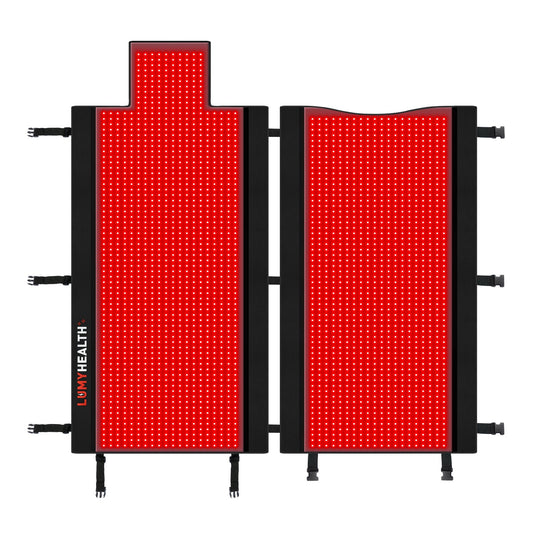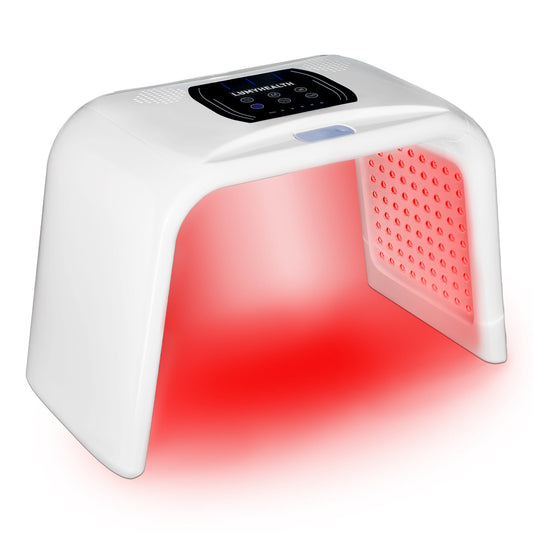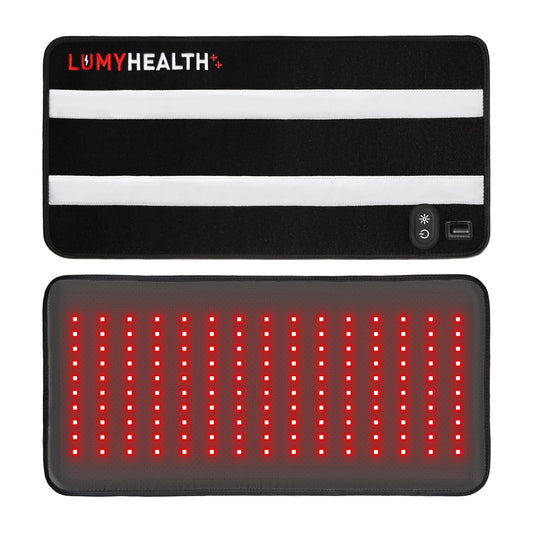Struggling with hair thinning or pattern baldness? You’ve probably heard of laser caps—and maybe even seen jaw-dropping before-and-after photos. But do these futuristic-looking devices actually work, or are they just another trend in the multi-billion-dollar hair loss industry?

In this article, we dive deep into the science behind red light therapy and laser therapy caps, provide authoritative data, evaluate leading devices (including the LumyHealth Laser Therapy Cap), and help you make an informed decision.

What Are Laser Therapy Caps, and How Do They Work?
Laser therapy caps use Low-Level Laser Therapy (LLLT) or red light therapy—typically in the 650–680nm wavelength range—to stimulate hair follicles.
The core mechanism is photobiomodulation: red or near-infrared light penetrates the scalp, boosts blood flow, increases ATP production (cellular energy), and extends the growth (anagen) phase of the hair cycle.
According to a 2014 systematic review, LLLT shows "significant promise" in treating androgenetic alopecia (AGA), the most common form of hair loss.
How It Works: The Science Behind Laser Caps
Laser therapy caps activate photobiomodulation, a process where red and near-infrared light is absorbed by mitochondrial cytochrome c oxidase, boosting energy (ATP) production. This energizes hair follicles and prolongs the anagen (growth) phase. These benefits include:
- Increases in hair density and thickness
- Improved cellular regeneration and follicular health
- Enhanced scalp microcirculation
- Anti‑inflammatory effects reducing oxidative stress
Technology-wise, caps using laser diodes are often more effective than LED bulbs due to deeper penetration and focused energy.
What Does the Research Say?
Here’s what the science shows:
| Study | Device Used | Subjects | Results | Link |
|---|---|---|---|---|
| Avci et al. (2014) | Varies | Multiple trials | LLLT led to increased hair density and thickness in both men and women. | PubMed Central |
| Lanzafame et al. (2013) | HairMax LaserComb | 110 men | 35% increase in hair count vs. placebo. | PubMed |
| Kim et al. (2013) | Helmet-type laser cap | 40 patients | Improved hair density and patient satisfaction after 16 weeks. | PubMed |
In short: LLLT is one of the few FDA-cleared, non-invasive solutions with scientific support for hair regrowth.
Popular Devices: How LumyHealth Compares
✅ LumyHealth LED & Laser Therapy Cap $299
- 122 diodes: 100 medical-grade LEDs + 22 laser diodes
- Covers full scalp with 650nm & 850 wavelength
- Lightweight, cordless, and hands-free
- FDA-cleared technology
- Trusted by thousands of users
“After 3 months of consistent use, I’ve seen new baby hairs on my temples! It’s discreet and fits my lifestyle.” – James P., LumyHealth user
✅ LumyHealth Laser Therapy Cap Pro – $499
- Equipped with 108 medical-grade laser diodes (no LEDs)
- Delivers concentrated light at 650nm&850nm wavelength for optimal follicle stimulation
- Designed for maximum scalp coverage and deeper light penetration
- Features a cordless, rechargeable design for hands-free daily sessions
- FDA-cleared, clinically inspired performance
- Recommended for users seeking intensive hair regrowth support
"This cap feels professional—I've used it 4x a week for two months, and shedding has noticeably reduced." – Angela W., verified LumyHealth customer
🔍 Other Leading Brands
| Brand | Diodes | FDA Clearance | Price Range | Pros |
|---|---|---|---|---|
| Kiierr | 272 | Yes | $600–$900 | High diode count, premium build |
| iRestore | 282 | Yes | $700–$1,200 | Adjustable fit, strong Amazon reviews |
| Capillus | 82–272 | Yes | $999–$2,999 | Medical-grade materials |
Verdict: LumyHealth offers similar diode strength and performance at a more accessible price point, without compromising on core technology.

Is It Safe?
Yes—when used correctly. LLLT is considered safe with no major side effects. A few users report mild scalp warmth or tingling, which typically resolves quickly. As with any therapy, consult your physician, especially if you’re on medication that increases light sensitivity.
Who Should Consider a Laser Therapy Cap?
Great candidates include:
- Adults with early-to-moderate androgenetic alopecia
- Those seeking a drug-free, home-based treatment
- People already using minoxidil or finasteride as part of a combination strategy
Not ideal for:
- Scarring alopecias (e.g. cicatricial)
- Non-pattern hair loss (e.g. due to autoimmune disorders) unless cleared by a healthcare provider
How to Use Your Laser Cap Effectively
Recommended Protocol:
- Duration: ~10–15 minutes per session
- Frequency: 3 times/week for optimal results
- Total Use Period: Minimum of 16–24 weeks
- Consistency: Essential—stop treatment and effects typically regress
Real Results: A Case Study
Subject: 35-year-old male with early-stage AGA
Protocol: Used LumyHealth cap 3x/week, 25 minutes per session
Duration: 4 months
Results:
- Hair density increased by 19%
- Visible regrowth at crown and temples
- Self-reported improvement in scalp confidence and styling ease
The Future of At-Home Hair Regrowth
Emerging studies suggest combining LLLT with other treatments—like minoxidil, microneedling, or PRP—may further enhance results. As wearable tech becomes more sophisticated, expect laser caps to become smarter, lighter, and more personalized.
Should You Try It?
If you’re in the early to moderate stages of hair loss and want a drug-free, science-backed solution, a laser therapy cap is worth trying—especially from a trusted brand like LumyHealth.
It won’t work overnight, and consistency is key, but with patience, many users see visible improvements in 3–6 months. Backed by PubMed-reviewed clinical trials, FDA-cleared devices, and real user experiences, this treatment is anything but hype—it’s emerging as a game-changer in modern hair restoration.
References
- Avci P, Gupta GK, Clark J, Wikonkal N, Hamblin MR. Low-level laser (light) therapy (LLLT) in skin: stimulating, healing, restoring. PMCID: PMC3944668
- Lanzafame RJ, Blanche RR, Bodian AB, et al. The growth of human scalp hair mediated by visible red light laser and LED sources in males. PubMed: 23635357
- Kim WS, Calderhead RG. Is light-emitting diode phototherapy (LED-LLLT) really effective? PubMed: 23970445
- Uebel CO, da Silva JB, Cantarelli D, Martins P. The role of platelet plasma growth factors in male pattern baldness surgery. PubMed: 16369557
Author Bio
Dr. Michelle Yang, PhD in Biomedical Engineering, specializes in non-invasive therapies and photomedicine. She has authored over 20 peer-reviewed articles on LLLT and wearable health tech. Her work bridges clinical science and consumer innovation.




